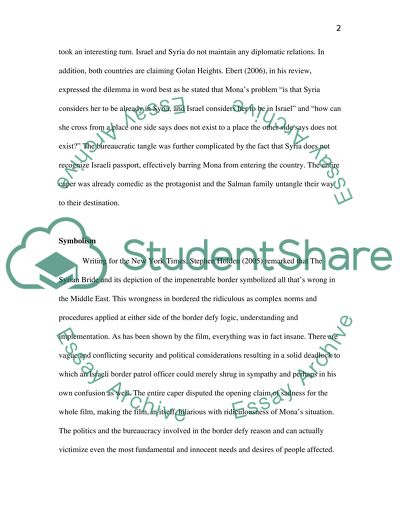Cite this document
(Analysis of The Syrian Bride Film Movie Review Example | Topics and Well Written Essays - 1500 words, n.d.)
Analysis of The Syrian Bride Film Movie Review Example | Topics and Well Written Essays - 1500 words. Retrieved from https://studentshare.org/visual-arts-film-studies/1410351-video-response-paper-writer-s-choice
Analysis of The Syrian Bride Film Movie Review Example | Topics and Well Written Essays - 1500 words. Retrieved from https://studentshare.org/visual-arts-film-studies/1410351-video-response-paper-writer-s-choice
(Analysis of The Syrian Bride Film Movie Review Example | Topics and Well Written Essays - 1500 Words)
Analysis of The Syrian Bride Film Movie Review Example | Topics and Well Written Essays - 1500 Words. https://studentshare.org/visual-arts-film-studies/1410351-video-response-paper-writer-s-choice.
Analysis of The Syrian Bride Film Movie Review Example | Topics and Well Written Essays - 1500 Words. https://studentshare.org/visual-arts-film-studies/1410351-video-response-paper-writer-s-choice.
“Analysis of The Syrian Bride Film Movie Review Example | Topics and Well Written Essays - 1500 Words”, n.d. https://studentshare.org/visual-arts-film-studies/1410351-video-response-paper-writer-s-choice.


